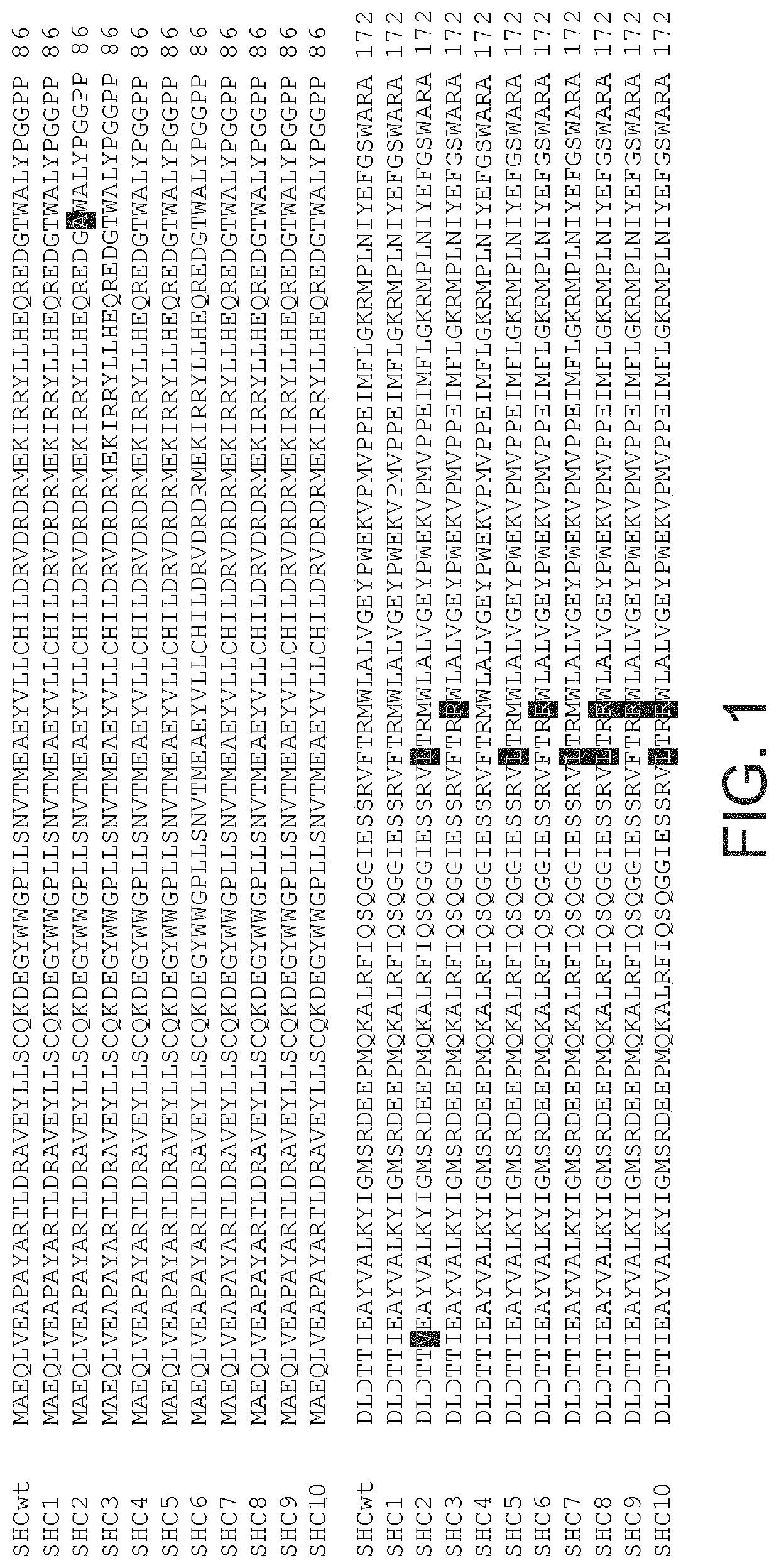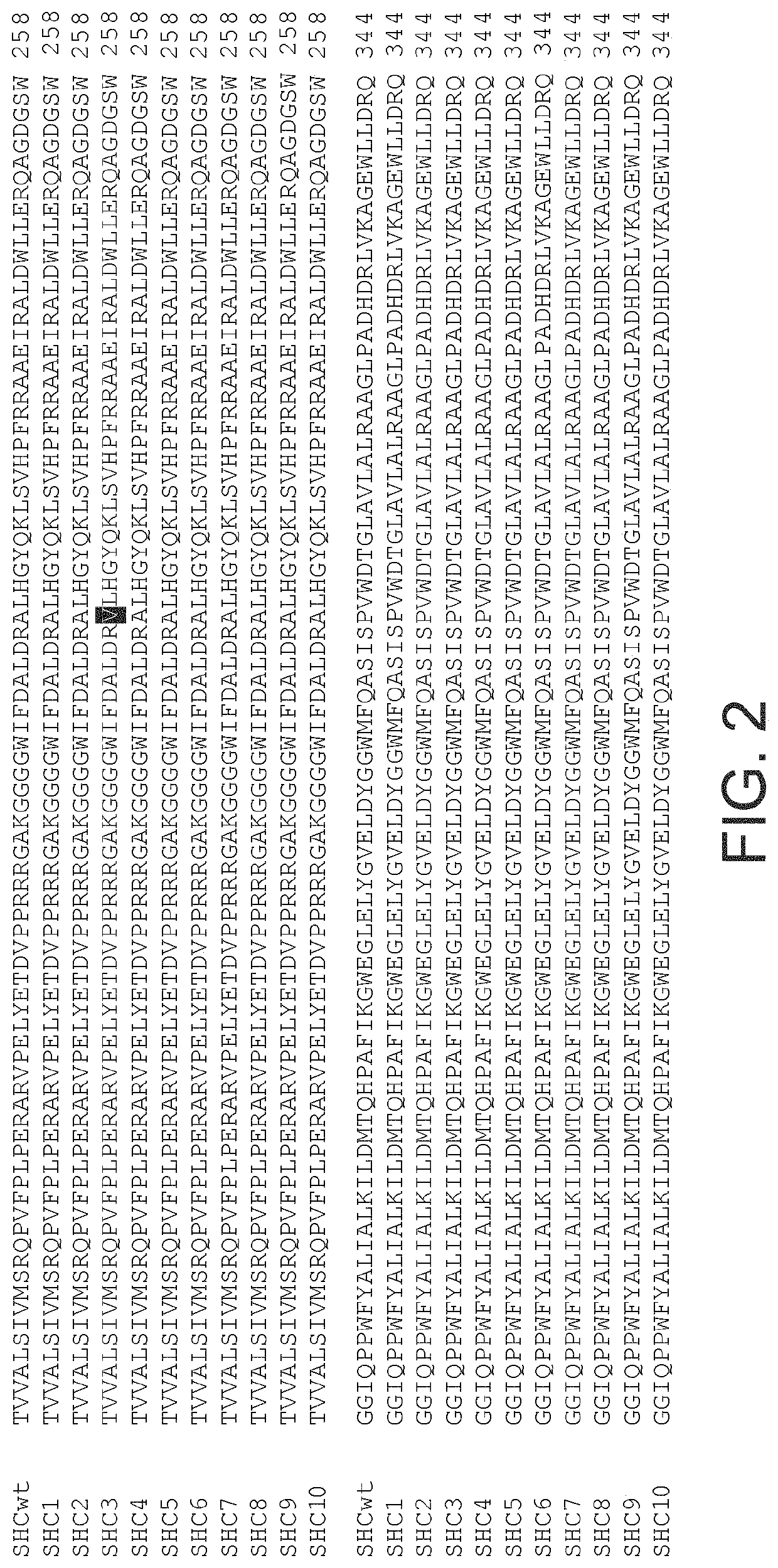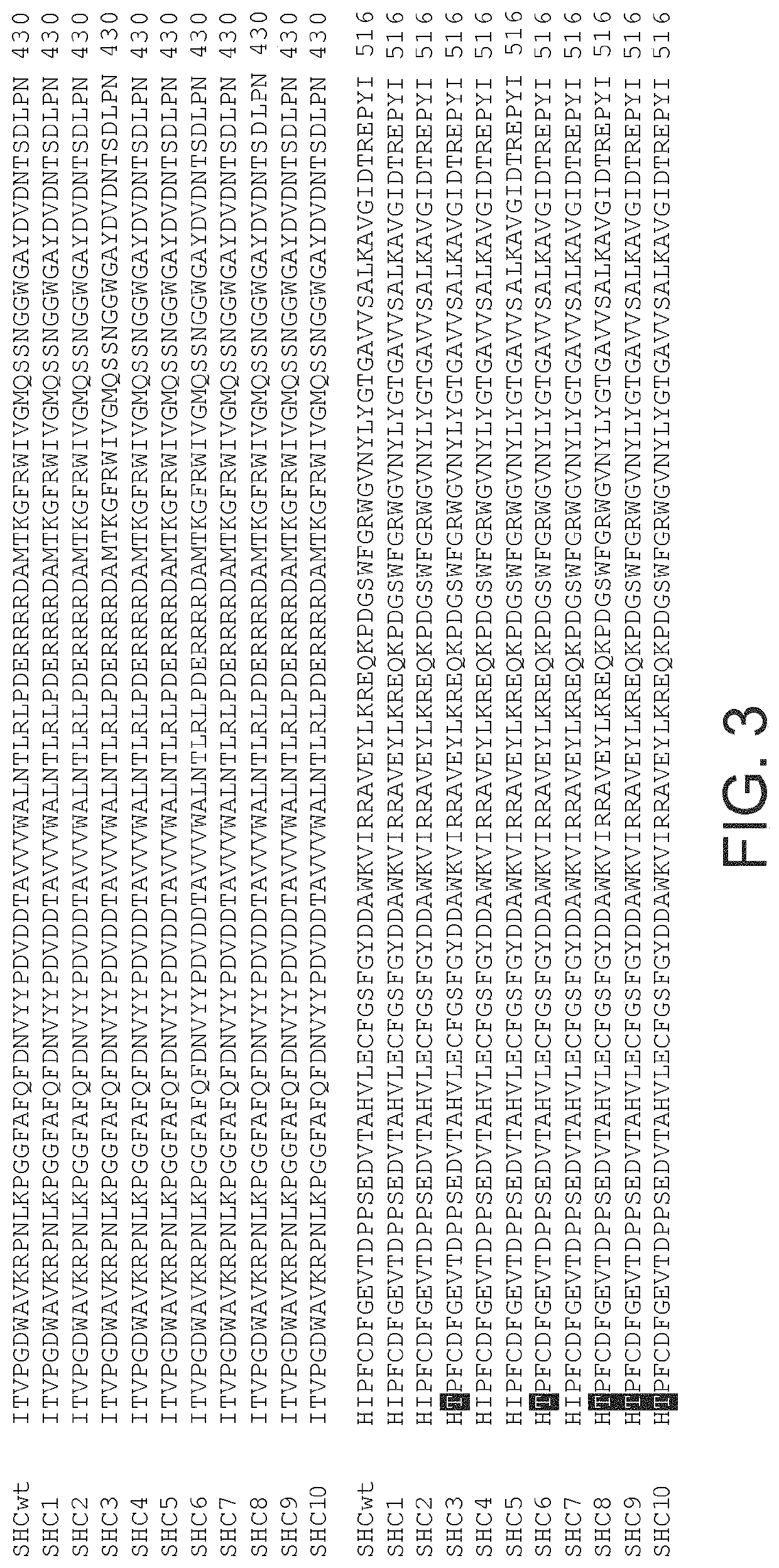Enzymes and applications thereof
a technology of homofarnesol and ambrox cyclase, which is applied in the field of squalene hopene cyclase/homofarnesol ambrox cyclase (shc/hac) derivative enzymes, can solve the problems of reducing the conversion rate of homofarnesol, reducing the conversion rate, and achieving high initial reaction rate, high production quantity, and efficient bioconversion
- Summary
- Abstract
- Description
- Claims
- Application Information
AI Technical Summary
Benefits of technology
Problems solved by technology
Method used
Image
Examples
example 1
[0683]Biocatalyst Production
[0684]Methods 1
[0685]SHC Plasmid Preparation
[0686]The gene encoding Alicyclobacillus acidocaldarius squalene hopene cyclase (AacSHC) was inserted into plasmid pET-28a(+), where it is under the control of an IPTG inducible T7-promotor for protein production in Escherichia coli (see FIGS. 5 and 21). The plasmid was transformed into E. coli strain BL21 (DE3) using a standard heat-shock transformation protocol.
[0687]Erlenmeyer flask culture.
[0688]For protein production were used either complex (LB) or minimal media. M9 is one example of minimal media, which were successfully used.
[0689]Media Preparation
[0690]The minimal medium chosen as default was prepared as follows for 350 ml culture: to 35 ml citric acid / phosphate stock (133 g / l KH2PO4, 40 g / l (NH4)2HPO4, 17 g / l citric acid. H2O with pH adjusted to 6.3) was added 307 ml H2O, the pH adjusted to 6.8 with 32% NaOH as required. After autoclaving 0.850 ml 50% MgSO4, 0.035 ml trace elements solution (compositio...
example 2
[0709]Preparation of SHC Variants and Activity Screening
[0710]Methods 2
[0711]For the avoidance of doubt, EE corresponds to (3E,7E); EZ mixture corresponds to (3Z,7E); ZE corresponds to (7Z,3E); ZZ corresponds to (7Z,3Z); and EEH corresponds to (3E,7E).
[0712]An enzyme evolution program was carried out using the wild-type (WT) Alicyclobacillus acidocaldarius SHC (AacSHC) gene as a template (GenBank M73834, Swissprot P33247). A library of about 10500 SHC variants was produced and screened for variants showing increased EEH cyclization ability. Screening was run in reactions in citric acid buffer pH 6.0 (0.150 ml) containing 4 g / l EEH and 0.050% SDS, at 55° C. and under constant agitation.
[0713]With hits selected for validation a standard test was run in citric acid buffer pH 6.0 containing 4 g / l EEH 0.050% SDS, cells that had expressed the SHC variants to an OD650 nm of 10.0 in. The final volume was 1 ml, reactions were incubated at 55° C. and vigorously stirred on a magnetic stirrer. ...
example 3
[0718]Optimized Reaction Conditions with SHC Variants
[0719]Reaction Parameters Investigated: Temperature, SDS Concentration and pH
[0720]Methods 3
[0721]The reaction conditions for the SHC variants derivatives identified in Table 23 were individually optimized with regard to temperature, pH and SDS concentration. To this end, the E. coli cells were transformed with the plasmid for the production of the individual variants which were cultivated in Erlenmeyer flasks and SHC production induced as described above. In this way it was ensured that all cultures contained same or very similar SHC quantities. Cells were collected by centrifugation, washed with 0.1M citric acid buffer (pH 6.0) and stored at −20° C. until further used.
[0722]Results 3
[0723]The result of this optimization study is summarized in the below table. An optimization round was also carried out with wild-type SHC.
[0724]The following Table 24 shows optimal reaction conditions for the wild-type and each of the variants cons...
PUM
| Property | Measurement | Unit |
|---|---|---|
| temperature | aaaaa | aaaaa |
| temperature | aaaaa | aaaaa |
| temperature | aaaaa | aaaaa |
Abstract
Description
Claims
Application Information
 Login to View More
Login to View More - R&D
- Intellectual Property
- Life Sciences
- Materials
- Tech Scout
- Unparalleled Data Quality
- Higher Quality Content
- 60% Fewer Hallucinations
Browse by: Latest US Patents, China's latest patents, Technical Efficacy Thesaurus, Application Domain, Technology Topic, Popular Technical Reports.
© 2025 PatSnap. All rights reserved.Legal|Privacy policy|Modern Slavery Act Transparency Statement|Sitemap|About US| Contact US: help@patsnap.com



